Multi-Scale Microstructure Investigation for a PM2.5 Air-Filter Efficiency Study of Non-Woven Polypropylene
Abstract
1. Introduction
2. Materials and Methods
2.1. Specimen Preparation
2.2. Filtration Test System
2.3. Grabcut Analysis
2.4. 3D Tomography
3. Results
3.1. Filter Morphology Characterization
3.2. Filter Performance
3.3. Filtration Mechanism
3.4. Dependence of Filter Performance on Porosity
4. Discussion
5. Conclusions
Author Contributions
Funding
Acknowledgments
Conflicts of Interest
References
- Jalava, P.I.; Happo, M.S.; Huttunen, K.; Sillanpaa, M.; Hillamo, R.; Salonen, R.O.; Hirvonen, M.R. Chemical and microbial components of urban air PM cause seasonal variation of toxicological activity. Environ. Toxicol Pharm. 2015, 40, 375–387. [Google Scholar] [CrossRef] [PubMed]
- Rajak, A. Synthesis of Electrospun Nanofibers Membrane and Its Optimization for Aerosol Filter Application. KnE Eng. 2016, 1. [Google Scholar] [CrossRef]
- Zhu, M.; Han, J.; Wang, F.; Shao, W.; Xiong, R.; Zhang, Q.; Pan, H.; Yang, Y.; Samal, S.K.; Zhang, F.; et al. Electrospun Nanofibers Membranes for Effective Air Filtration. Macromol. Mater. Eng. 2017, 302, 1600353. [Google Scholar] [CrossRef]
- Li, P.; Wang, C.; Zhang, Y.; Wei, F. Air filtration in the free molecular flow regime: A review of high-efficiency particulate air filters based on carbon nanotubes. Small 2014, 10, 4543–4561. [Google Scholar] [CrossRef] [PubMed]
- Chen, C.C.; Huang, S.H. The effects of particle charge on the performance of a filtering facepiece. Am. Ind Hyg. Assoc. J. 1998, 59, 227–233. [Google Scholar] [CrossRef]
- Yang, C. Aerosol Filtration Application Using Fibrous Media—An Industrial Perspective. Chin. J. Chem. Eng. 2012, 20, 1–9. [Google Scholar] [CrossRef]
- Romay, F.J.; Liu, B.Y.H.; Chae, S.-J. Experimental Study of Electrostatic Capture Mechanisms in Commercial Electret Filters. Aerosol Sci. Technol. 1998, 28, 224–234. [Google Scholar] [CrossRef]
- Huang, S.-H.; Chen, C.-W.; Chang, C.-P.; Lai, C.-Y.; Chen, C.-C. Penetration of 4.5nm to aerosol particles through fibrous filters. J. Aerosol Sci. 2007, 38, 719–727. [Google Scholar] [CrossRef]
- Wang, C.-S. Electrostatic forces in fibrous filters—A review. Powder Technol. 2001, 118, 166. [Google Scholar] [CrossRef]
- Zhou, Y.; Cheng, Y.S. Evaluation of N95 Filtering Facepiece Respirators Challenged with Engineered Nanoparticles. Aerosol Air Qual. Res. 2017, 16, 212–220. [Google Scholar] [CrossRef]
- Mostofi, R.; Wang, B.; Haghighat, F.; Bahloul, A.; Jaime, L. Performance of mechanical filters and respirators for capturing nanoparticles-limitations and future direction. Ind. Health 2010, 48, 296–304. [Google Scholar] [CrossRef] [PubMed]
- Gervais, P.C.; Bémer, D.; Bourrous, S.; Ricciardi, L. Airflow and particle transport simulations for predicting permeability and aerosol filtration efficiency in fibrous media. Chem. Eng. Sci. 2017, 165, 154–164. [Google Scholar] [CrossRef]
- Sambaer, W.; Zatloukal, M.; Kimmer, D. 3D modeling of filtration process via polyurethane nanofiber based nonwoven filters prepared by electrospinning process. Chem. Eng. Sci. 2011, 66, 613–623. [Google Scholar] [CrossRef]
- Soltani, P.; Zarrebini, M.; Laghaei, R.; Hassanpour, A. Prediction of permeability of realistic and virtual layered nonwovens using combined application of X-ray μ CT and computer simulation. Chem. Eng. Res. Des. 2017, 124, 299–312. [Google Scholar] [CrossRef]
- Gervais, P.C.; Bourrous, S.; Dany, F.; Bouilloux, L.; Ricciardi, L. Simulations of filter media performances from microtomography-based computational domain. Experimental and analytical comparison. Comput. Fluids 2015, 116, 118–128. [Google Scholar] [CrossRef]
- Martin, S.B., Jr.; Moyer, E.S. Electrostatic respirator filter media: Filter efficiency and most penetrating particle size effects. Appl. Occup. Environ. Hyg. 2000, 15, 609–617. [Google Scholar] [CrossRef]
- Rother, C.; Kolmogorov, V.; Blake, A. GrabCut Interactive foreground extraction using iterated graph cuts. ACM Trans. Graph. 2004, 23, 309–314. [Google Scholar]
- Martin, W.D.; Putman, B.J.; Kaye, N.B. Using image analysis to measure the porosity distribution of a porous pavement. Constr. Build. Mater. 2013, 48, 210–217. [Google Scholar] [CrossRef]
- Tsai, P.-I.; Lam, T.-N.; Wu, M.-H.; Tseng, K.-Y.; Chang, Y.-W.; Sun, J.-S.; Li, Y.-Y.; Lee, M.-H.; Chen, S.-Y.; Chang, C.-K.; et al. Multi-scale mapping for collagen-regulated mineralization in bone remodeling of additive manufacturing porous implants. Mater. Chem. Phys. 2019, 230, 83–92. [Google Scholar] [CrossRef]
- Lam, T.N.; Huang, W.J.; Wang, C.C.; Chuang, W.T.; Su, Y.W.; Huang, E.W. Micro-Layer and Lattice Structure Effects on Impedance of Titanium Oxide Phthalocyanine. Adv. Eng. Mater. 2018, 1–5. [Google Scholar] [CrossRef]
- Wang, C.C.; Chiang, C.C.; Liang, B.; Yin, G.C.; Weng, Y.T.; Wang, L.C. Fast Projection Matching for X-ray Tomography. Sci. Rep. 2017, 7, 3691. [Google Scholar] [CrossRef] [PubMed]
- Parkinson, D.Y.; Knoechel, C.; Yang, C.; Larabell, C.A.; Le Gros, M.A. Automatic alignment and reconstruction of images for soft X-ray tomography. J. Struct. Biol. 2012, 177, 259–266. [Google Scholar] [CrossRef] [PubMed]
- Wang, Y.; Pu, J.; Wang, L.; Wang, J.; Jiang, Z.; Song, Y.-F.; Wang, C.-C.; Wang, Y.; Jin, C. Characterization of typical 3D pore networks of Jiulaodong formation shale using nano-transmission X-ray microscopy. Fuel 2016, 170, 84–91. [Google Scholar] [CrossRef]
- Xue, J. Face Masks Having an Elastic and Polyolefin Thermoplastic Band Attached Thereto by Heat and Pressure. U.S. Patent US 6332465B1, 14 December 2000. [Google Scholar]
- John, M.; Brandner, W.J.K.; Seyed, A.; Angadjivand, J.; Springett, E.; Timothy, J. Lindquist Monocomponent Monolayer Meltblown Web and Meltblowing Apparatus. U.S. Patent US 7902096 B2, 8 March 2011. [Google Scholar]
- Humlicek, L.D. Pillowed Web of Blown Microfibers. U.S. Patent US 4103058A, 25 July 1978. [Google Scholar]
- Leung, W.W.-F.; Hung, C.-H.; Yuen, P.-T. Effect of face velocity, nanofiber packing density and thickness on filtration performance of filters with nanofibers coated on a substrate. Sep. Purif. Technol. 2010, 71, 30–37. [Google Scholar] [CrossRef]
- Zhang, S.; Shim, W.S.; Kim, J. Design of ultra-fine nonwovens via electrospinning of Nylon 6: Spinning parameters and filtration efficiency. Mater. Des. 2009, 30, 3659–3666. [Google Scholar] [CrossRef]
- Lee, K.W.; Liu, B.Y.H. On the Minimum Efficiency and the Most Penetrating Particle Size for Fibrous Filters. J. Air Pollut. Control. Assoc. 1980, 30, 377–381. [Google Scholar] [CrossRef]
- Ahn, Y.C.; Park, S.K.; Kim, G.T.; Hwang, Y.J.; Lee, C.G.; Shin, H.S.; Lee, J.K. Development of high efficiency nanofilters made of nanofibers. Curr. Appl. Phys. 2006, 6, 1030–1035. [Google Scholar] [CrossRef]
- Kulkarni, P.; Baron, P.A.; Willeke, K. Aerosol Measurement: Principles, Techniques, and Applications; John Wiley Sons: Hoboken, NJ, USA, 2011. [Google Scholar]
- Brown, R.C. Air Filtration: An Integrated Approach to the Theory and Applications of Fibrous Filters; Pergamon Press: Oxford, NY, USA, 1993. [Google Scholar]
- Hinds, W.C. Aerosol Technology: Properties, Behavior, and Measurement of Airborne Particles; John Wiley Sons: Hoboken, NJ, USA, 1999. [Google Scholar]
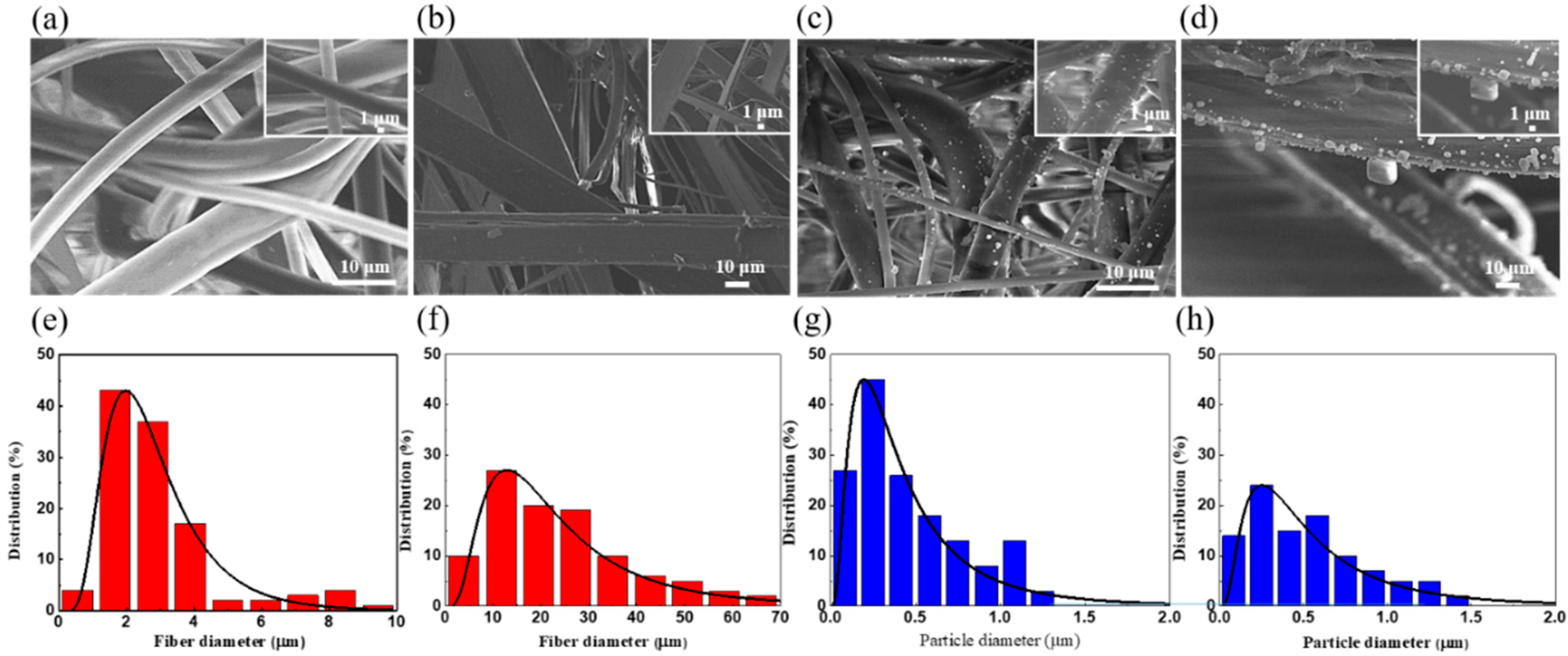

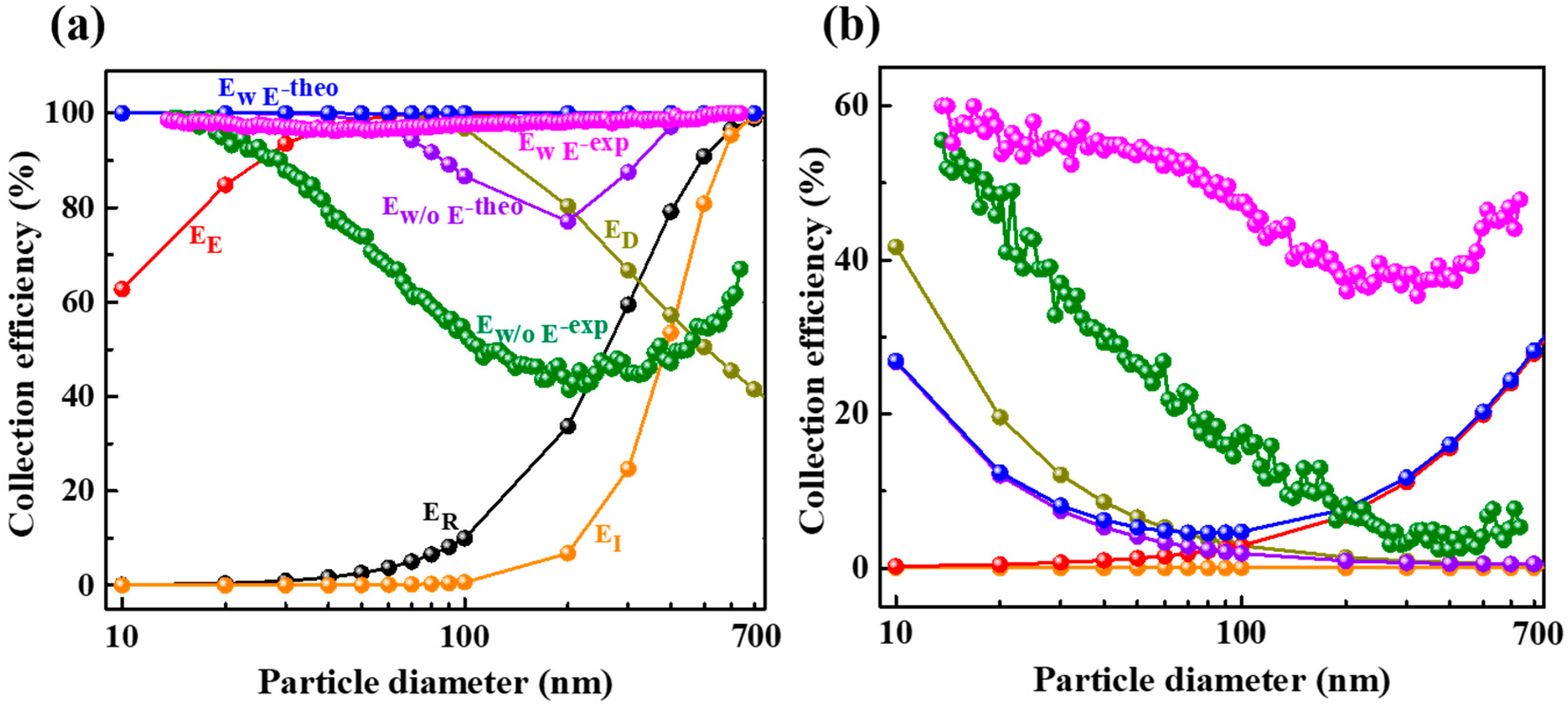
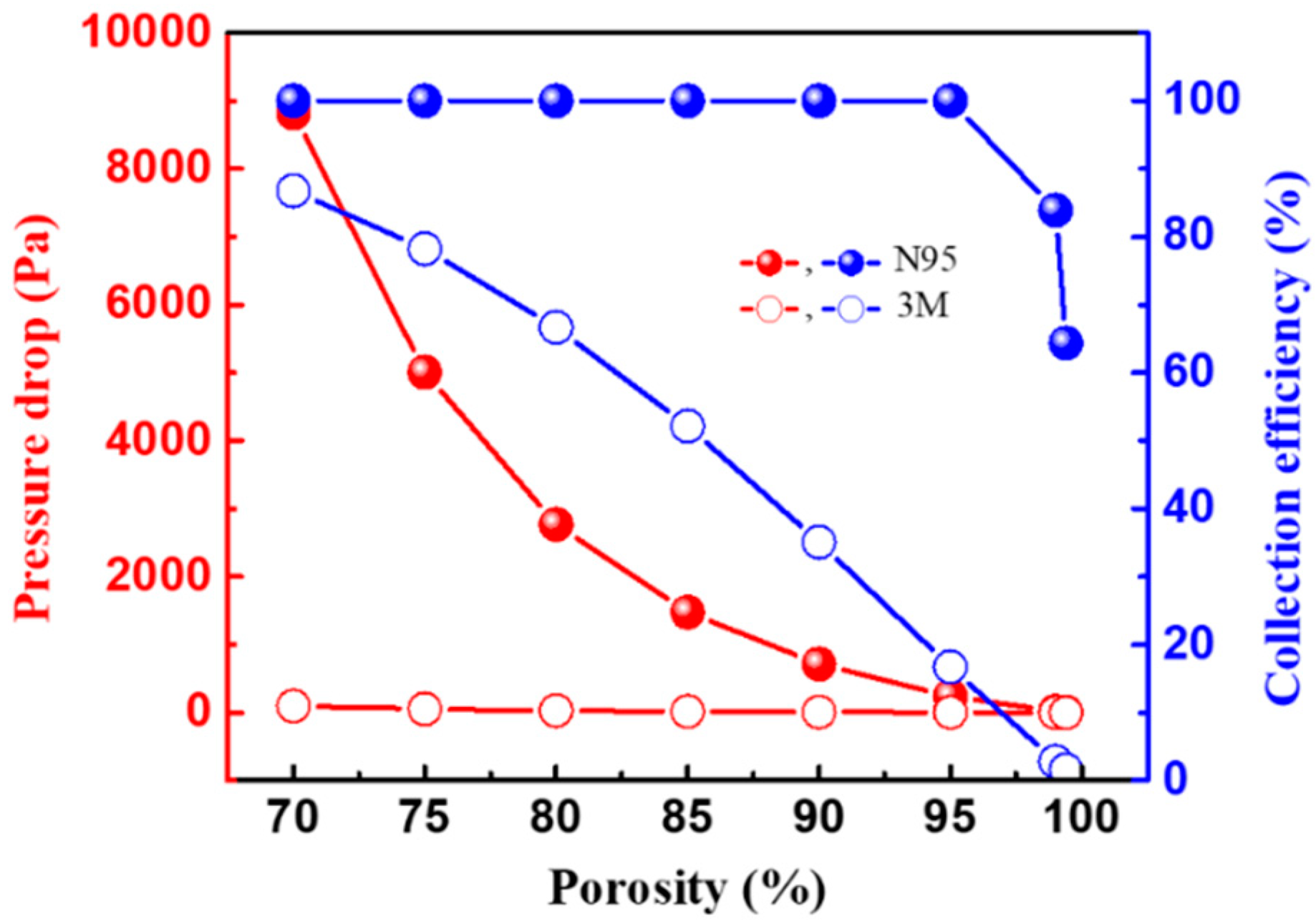
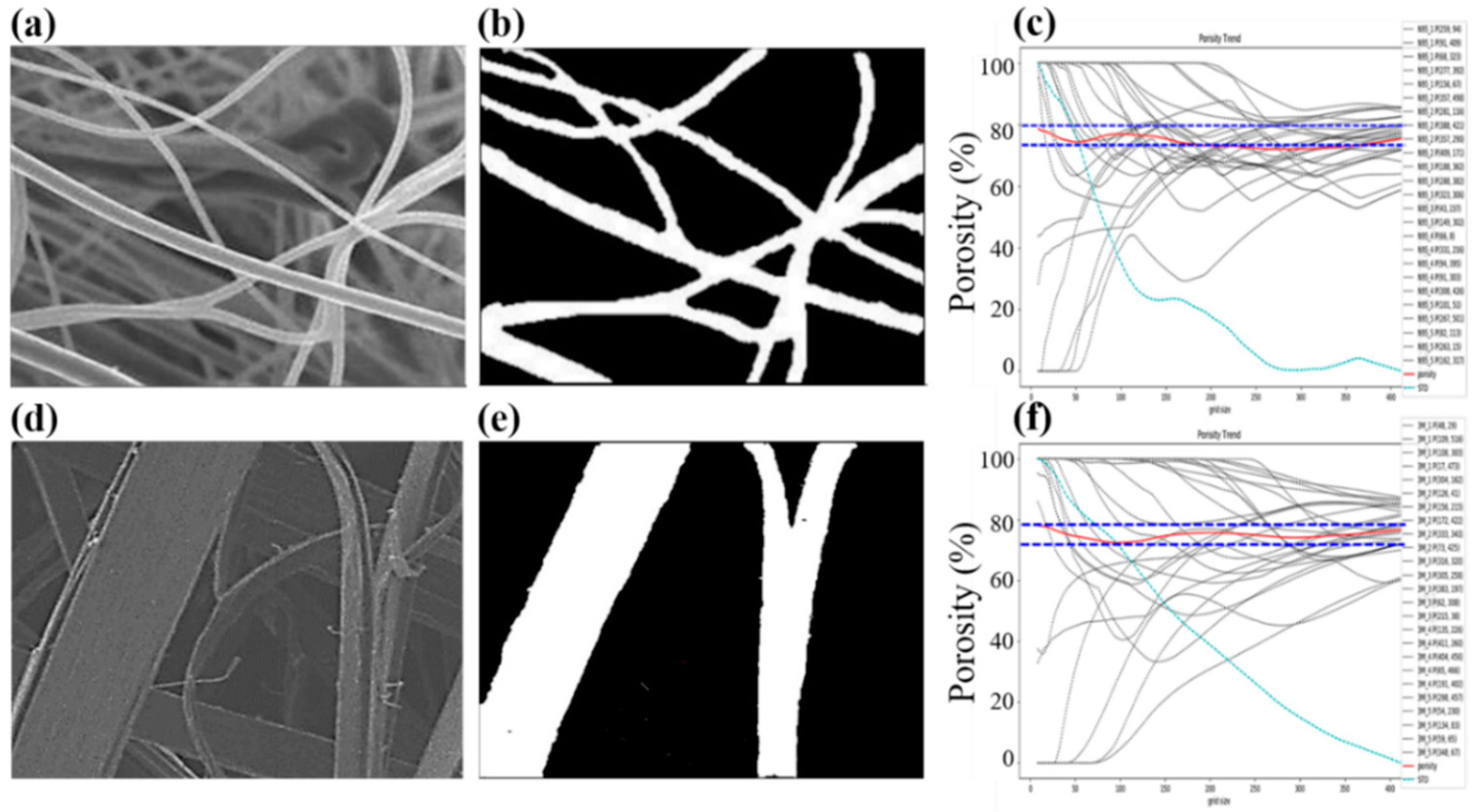
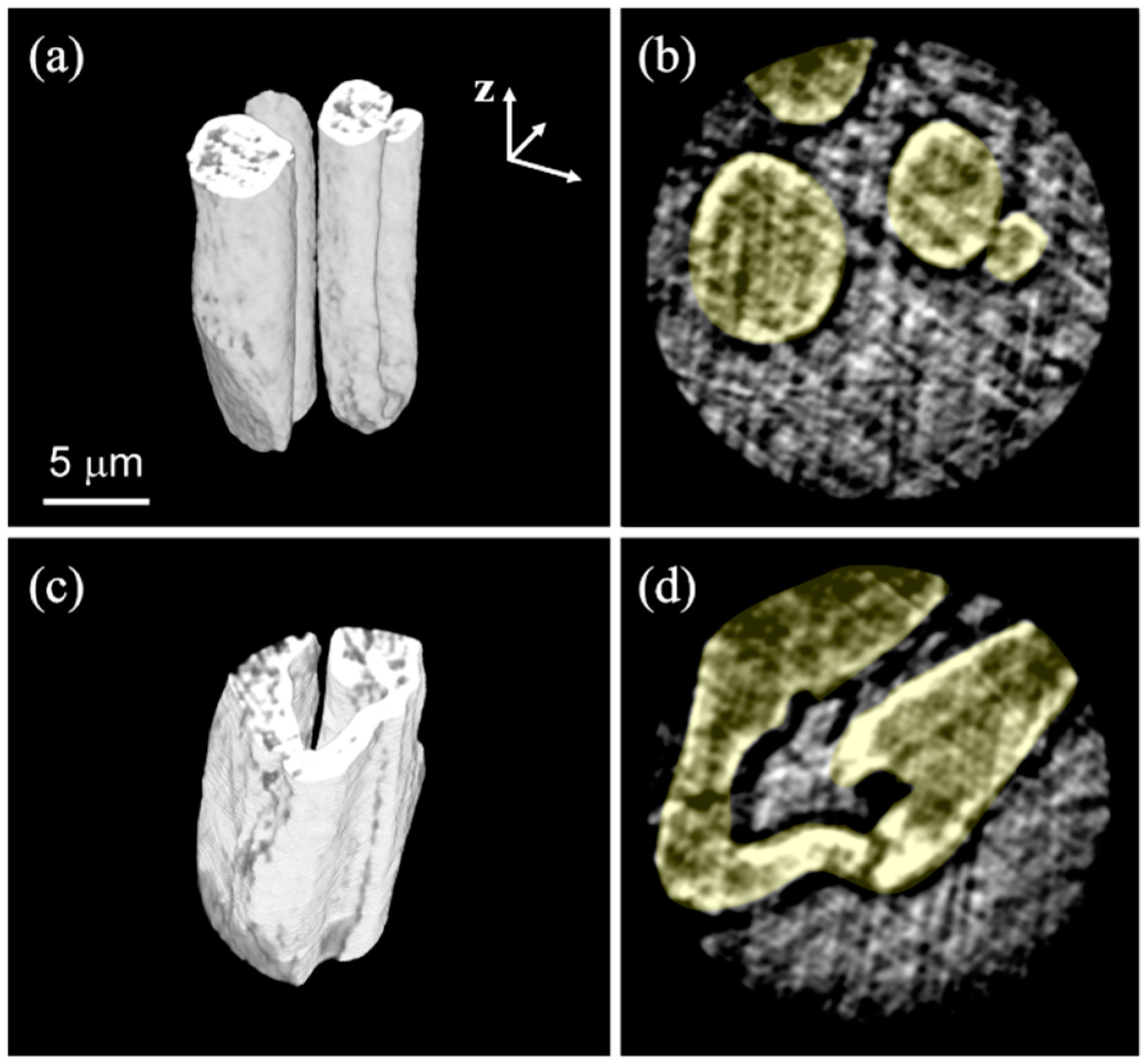
© 2019 by the authors. Licensee MDPI, Basel, Switzerland. This article is an open access article distributed under the terms and conditions of the Creative Commons Attribution (CC BY) license (http://creativecommons.org/licenses/by/4.0/).
Share and Cite
Lam, T.-N.; Wu, C.-H.; Huang, S.-H.; Ko, W.-C.; Huang, Y.-L.; Ma, C.-Y.; Wang, C.-C.; Huang, E.-W. Multi-Scale Microstructure Investigation for a PM2.5 Air-Filter Efficiency Study of Non-Woven Polypropylene. Quantum Beam Sci. 2019, 3, 20. https://doi.org/10.3390/qubs3040020
Lam T-N, Wu C-H, Huang S-H, Ko W-C, Huang Y-L, Ma C-Y, Wang C-C, Huang E-W. Multi-Scale Microstructure Investigation for a PM2.5 Air-Filter Efficiency Study of Non-Woven Polypropylene. Quantum Beam Science. 2019; 3(4):20. https://doi.org/10.3390/qubs3040020
Chicago/Turabian StyleLam, Tu-Ngoc, Chen-Hsien Wu, Sheng-Hsiu Huang, Wen-Ching Ko, Yu-Lih Huang, Chia-Yin Ma, Chun-Chieh Wang, and E-Wen Huang. 2019. "Multi-Scale Microstructure Investigation for a PM2.5 Air-Filter Efficiency Study of Non-Woven Polypropylene" Quantum Beam Science 3, no. 4: 20. https://doi.org/10.3390/qubs3040020
APA StyleLam, T.-N., Wu, C.-H., Huang, S.-H., Ko, W.-C., Huang, Y.-L., Ma, C.-Y., Wang, C.-C., & Huang, E.-W. (2019). Multi-Scale Microstructure Investigation for a PM2.5 Air-Filter Efficiency Study of Non-Woven Polypropylene. Quantum Beam Science, 3(4), 20. https://doi.org/10.3390/qubs3040020






